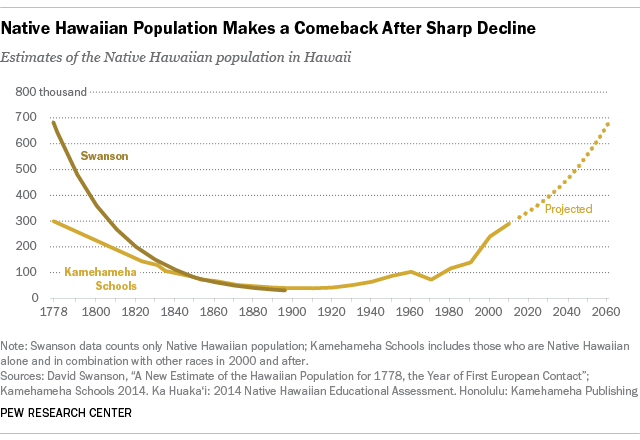There's nothing really odd about this. The same thing historically has happened all over the globe any time an immunologically naïve population meets up with one that is tapped into all of the worldwide reservoirs of diseases. Eventually the native population can naturally select similar genetic protections to the ones the colonizers already had, but that typically seems to take a century or more. The book Plagues and Peoples goes into the historical impact of diseases quite well, as does Guns, Germs, & Steel. I can't recommend the latter strongly enough. If this website had a required reading list, GG&S would be the first book on it.
Specifically with the Hawaiians', all the sources I've found call out syphilis. Captain Cook himself (in the short time before the Hawaiians killed him) actually called this out as a problem.
Schmidtt's study(pdf) seems to show a relatively steady decline from the time of European contact until roughly the 1870's (at which point their population started growing again). The only bit in there that really sticks out like a sore thumb was in 1804, when it appears nearly half the remaining population died. There was some kind of "Great Sickness" that year, which this website speculates may have been bubonic plague, or cholera.
Note that the contact population of 300,000 you quoted is only an estimate. I found estimates researching this that ranged from 100,000 to 1 million.
The good news (?) is that the native population is now on the rebound, and has either passed the pre-contact population, or is poised to do so (depending on which estimates you believe).
